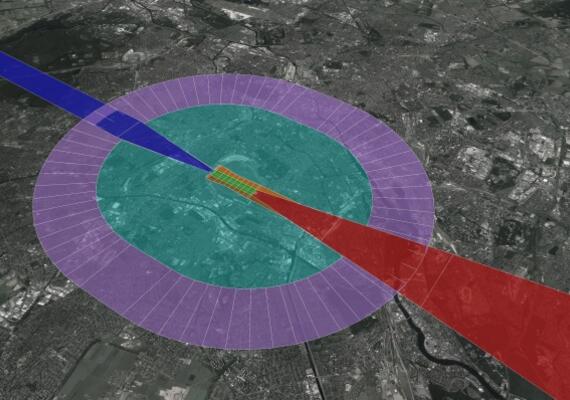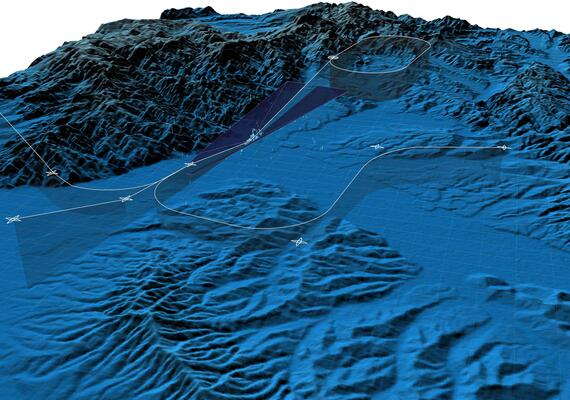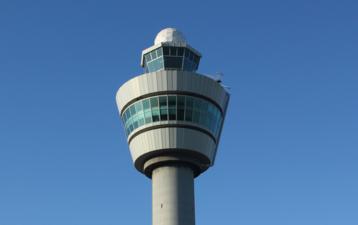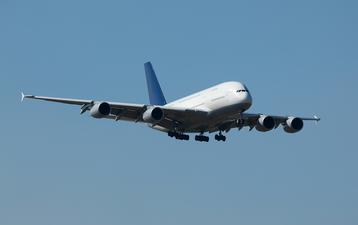Obstacle Assessment
This course enables participants to understand technical safeguarding principles and assess obstructions against ICAO/EASA Obstacle Limitation Surfaces (OLS) for aerodromes.
Safe airport operations demand a permanent monitoring of obstacles in the close proximity of airports. The construction of new infrastructure or changes to airport operations require systematic obstacle evaluations and assessments to maintain an acceptable level of safety.
International regulations from the International Civil Aviation Organization (ICAO) as described in Annex 14 Vol. I as well as regulations from European Union Aviation Safety Agency (EASA) as described in the CS-ADR-DSN specify airspace around aerodromes to be maintained free from obstacles. For that purpose, Obstacle Limitation Surface (OLS) are described, which ideally shall not be penetrated by an object. OLS infringements may be acceptable though, if an obstacle assessment or aeronautical study shows that there is no adverse impact on safety of flight operations.
The objective of this training course is to provide a comprehensive overview of aerodrome safeguarding and the assessment of obstacles in the vicinity of aerodromes. The course is designed for all persons involved in this complex subject, including aerodrome, Civil Aviation Authority personnel, or project developers.
The applicable Obstacle Limitation Surfaces (OLS) are presented and discussed in detail. Furthermore, the foreseen new OLS of ICAO Annex 14 Vol. 1 will be discussed as well.
In addition, further related aspects such as the protection of visual and instrument flights (VFR, IFR), contingency operations, visual and non-visual aids for air navigation (CNS – communication, navigation and surveillance facilities) as well as further obstacle requirements are presented.
An introduction of instrument flight procedures and their obstacle protection areas is provided (according to ICAO Document 8168 "PANS-OPS"), incl. departure and approach procedures as well as specifics of the Visual Segment Surface (VSS) and Obstacle Clearance Surface (OCS).
Attendees will learn, notably by means of exercises, how to assess relevant Obstacle Limitation Surfaces, to evaluate the significance of penetrating obstacles and to develop appropriate safety measures where necessary.
Please note: This course can also be booked as an in-house version in German - however, the course material is only available in English.
Course Details
Location:BerlinLanguage:English
Date:15.09. - 18.09.2025
Duration:4 days
Provider:airsight GmbH
Course Fee
For courses in Berlin:
All customers will be charged 19% VAT. For more information please see our About Taxes page.
The final price will be shown on your invoice.
Please note: If you want to register several particpants from your company but need a single invoice for each, please register each of them seperately.
Course Content
Regulations and fundamentals
- International Civil Aviation Organisation (ICAO), European Aviation Safety Agency (EASA)
- Categories of aircraft, aerodromes, runways and flight procedures
ICAO Annex 14 Vol. 1 obstacle limitation surfaces (OLS)
- Horizontal and conical surfaces
- Approach surface
- Transitional surface
- Take-off climb surface
- Obstacle Free Zone (OFZ)
Foreseen ICAO Annex 14 Vol. 1 obstacle limitation surfaces (OLS)
- Obstacle Limitation Surfaces Task Force (OLSTF)
- New Aeroplane Design Groups (ADG)
- Obstacle Free Surfaces (OFS)
- Obstacle Evaluation Surfaces (OES)
Aerodrome Areas
- Runway strip
- Runway End Safety Area (RESA)
- Clearway
Further obstacle protection requirements
- Visual slope indicator systems (e.g. PAPI, ALS)
- Flights according to visual flight rules (VFR)
- Contingency operations (1-engine inoperative)
- Shielding principles
Introduction to instrument flight procedures (ICAO Document 8168 „PANS-OPS“)
- Overview of protection areas for standard instrument departure procedures (SID) and instrument approach procedures (e.g. ILS)
- Visual segment surface (VSS) and Obstacle Clearance Surface (OCS)
Protection of communication, navigation and surveillance (CNS) facilities
- ICAO EUR Document 015 (European Guidance Material on Managing Building Restricted Areas)
- ILS critical and sensitive areas
Aeronautical studies / safety assessments
- Assessment of infringements of obstacle protection / limitation surfaces
Trainer
Dipl.-Ing. Sierk Törl
Sierk is a team member of airsight’s “Aerodrome Safeguarding and Flight Procedures” division. At airsight, Sierk gained extensive project knowledge with regards to obstacle assessments and CNS safeguarding studies at airports. Through international projects, e.g. for the airports of Accra, Dubai, Malta, Nice and Montego Bay as well as for various wind energy and project planning companies, he acquired a wide range of experience.
Prior to joining airsight, Sierk worked for a German airline as a flight operations engineer with a special focus on aircraft performance as well as aircraft weight and balance. Furthermore, he supported the airline’s flight crew training department and conducted pilot trainings as part of the pilot’s type rating.
Oliver Schade, M.Sc.
Oliver studied Aeronautics and Astronautics at the Technical University of Berlin (Technische Universität Berlin) where he was active in research and teaching as well. He joined airsight’s “aerodrome safeguarding and flight procedures” division in early 2023.
At airsight, Oliver conducts obstacle assessments and aeronautical studies for proposed developments such as wind farms. Currently, he undergoes training to become a flight procedure designer.
He holds a pilot’s license with an instrument rating, undergoes qualification for the Commercial Pilot License (CPL) and has been teaching other pilots radio telephony phraseology for several years.
Dipl.-Ing. Malte Karger
Malte is responsible for flight procedure design and obstacle assessments of airsight’s consulting division. He is also a renowned and appreciated trainer, sharing his knowledge and practical experience with other industry experts in airsight’s scheduled as well as customised in-house training courses in countries such as Germany, Greece, Switzerland and Turkey.
As an advisor of ICAO’s Instrument Flight Procedure Panel (IFPP) in the capacity of a field expert, Malte participates in the Obstacle Limitation Surfaces Task Force (OLSTF).
Malte acquired extensive experience on international projects dealing with obstacle assessments and aeronautical studies for clients such as Berlin, Dubai, Hamburg, Luxembourg, Malta, Nuremburg, Stuttgart and Warsaw Airports as well as for several smaller airfields. Furthermore, he conducted numerous flight procedure design projects (conventional and RNAV/PBN) for Airports, for Airlines (e.g. Air Austral, Air Transat) as well as for Air Navigation Service Providers such as MATS (Malta Air Traffic Services) and Romanian Air Traffic Services Administration (ROMATSA).
Target Group
- Aerodrome safety experts
- Aerodrome operations managers
- Aerodrome engineers and planners
- Air traffic control staff
- Aviation safety experts
- Architects and civil engineers
- Civil Aviation Authorities staff
Course Location
Participants are responsible for making their own travel arrangements. The accommodation and travel costs are at the charge of the participants. Please note that airsight does not perform any travel and hotel bookings for the participants. Rooms can however be booked directly by the participants by contacting the hotel. We would like to point out that from January 2025 a City Tax of 7.5% will be imposed on overnight stays for business and professional purposes in Berlin.
The course fee includes the registration, training material and examination. For non-virtual courses, coffee breaks and business lunch are also included.
Organisational Details
The course hours are scheduled as follows:
first training day: 10:00 am - 5:00 pm
mid-training days: 9:00 am - 5:00 pm
last training day: 8:00 am - 4:00 pm
Coffee breaks and business lunch are included in the course fee. At the end of the course, all participants will receive an airsight certificate based on EASA training regulations, which is highly recognised throughout the aviation industry.
About airsight Training
airsight Training course quality
airsight operates an ISO 9001 certified Quality Management System and pursues the objective to provide high quality services that fully meet the clients’ needs.
Course Details
Location:SingaporeLanguage:English
Date:07. - 10.10.2025
Duration:4 days
Provider:airsight Singapore Pte. Ltd.
Course Fee
This course is run by airsight Singapore Pte. Ltd. Terms & Conditions of airsight Singapore Pte. Ltd. apply.
All customers will be charged 9% VAT (GST). For further information please visit: About Taxes.
The final price will be shown on your invoice.
Please note: If you want to register several particpants from your company but need a single invoice for each, please register each of them seperately.
Course Content
Regulations and fundamentals
- International Civil Aviation Organisation (ICAO), European Aviation Safety Agency (EASA)
- Categories of aircraft, aerodromes, runways and flight procedures
ICAO Annex 14 Vol. 1 obstacle limitation surfaces (OLS)
- Horizontal and conical surfaces
- Approach surface
- Transitional surface
- Take-off climb surface
- Obstacle Free Zone (OFZ)
Foreseen ICAO Annex 14 Vol. 1 obstacle limitation surfaces (OLS)
- Obstacle Limitation Surfaces Task Force (OLSTF)
- New Aeroplane Design Groups (ADG)
- Obstacle Free Surfaces (OFS)
- Obstacle Evaluation Surfaces (OES)
Aerodrome Areas
- Runway strip
- Runway End Safety Area (RESA)
- Clearway
Further obstacle protection requirements
- Visual slope indicator systems (e.g. PAPI, ALS)
- Flights according to visual flight rules (VFR)
- Contingency operations (1-engine inoperative)
- Shielding principles
Introduction to instrument flight procedures (ICAO Document 8168 „PANS-OPS“)
- Overview of protection areas for standard instrument departure procedures (SID) and instrument approach procedures (e.g. ILS)
- Visual segment surface (VSS) and Obstacle Clearance Surface (OCS)
Protection of communication, navigation and surveillance (CNS) facilities
- ICAO EUR Document 015 (European Guidance Material on Managing Building Restricted Areas)
- ILS critical and sensitive areas
Aeronautical studies / safety assessments
- Assessment of infringements of obstacle protection / limitation surfaces
Trainer
Dipl.-Ing. Malte Karger
Malte is responsible for flight procedure design and obstacle assessments of airsight’s consulting division. He is also a renowned and appreciated trainer, sharing his knowledge and practical experience with other industry experts in airsight’s scheduled as well as customised in-house training courses in countries such as Germany, Greece, Switzerland and Turkey.
As an advisor of ICAO’s Instrument Flight Procedure Panel (IFPP) in the capacity of a field expert, Malte participates in the Obstacle Limitation Surfaces Task Force (OLSTF).
Malte acquired extensive experience on international projects dealing with obstacle assessments and aeronautical studies for clients such as Berlin, Dubai, Hamburg, Luxembourg, Malta, Nuremburg, Stuttgart and Warsaw Airports as well as for several smaller airfields. Furthermore, he conducted numerous flight procedure design projects (conventional and RNAV/PBN) for Airports, for Airlines (e.g. Air Austral, Air Transat) as well as for Air Navigation Service Providers such as MATS (Malta Air Traffic Services) and Romanian Air Traffic Services Administration (ROMATSA).
Dipl.-Ing. Sierk Törl
Sierk is a team member of airsight’s “Aerodrome Safeguarding and Flight Procedures” division. At airsight, Sierk gained extensive project knowledge with regards to obstacle assessments and CNS safeguarding studies at airports. Through international projects, e.g. for the airports of Accra, Dubai, Malta, Nice and Montego Bay as well as for various wind energy and project planning companies, he acquired a wide range of experience.
Prior to joining airsight, Sierk worked for a German airline as a flight operations engineer with a special focus on aircraft performance as well as aircraft weight and balance. Furthermore, he supported the airline’s flight crew training department and conducted pilot trainings as part of the pilot’s type rating.
Target Group
- Aerodrome safety experts
- Aerodrome operations managers
- Aerodrome engineers and planners
- Air traffic control staff
- Aviation safety experts
- Architects and civil engineers
- Civil Aviation Authorities staff
Course Location
Participants are responsible for making their own travel arrangements. The accommodation and travel costs are at the charge of the participants. Please note that airsight does not perform any travel and hotel bookings for the participants.
The course fee includes the registration, training material and examination. Coffee breaks and business lunch are also included.
Organisational Details
The course hours are scheduled as follows:
09:00 am - 5:00 pm (SGT)
At the end of the course, all participants will receive an airsight certificate based on ICAO/EASA training regulations, which is highly recognised throughout the aviation industry.
About airsight Training
airsight Training course quality
airsight operates an ISO 9001 certified Quality Management System and pursues the objective to provide high quality services that fully meet the clients’ needs.
Course Details
Location:BerlinLanguage:English
Date:01.12. - 04.12.2025
Duration:4 days
Provider:airsight GmbH
Course Fee
For courses in Berlin:
All customers will be charged 19% VAT. For more information please see our About Taxes page.
The final price will be shown on your invoice.
Please note: If you want to register several particpants from your company but need a single invoice for each, please register each of them seperately.
Course Content
Regulations and fundamentals
- International Civil Aviation Organisation (ICAO), European Aviation Safety Agency (EASA)
- Categories of aircraft, aerodromes, runways and flight procedures
ICAO Annex 14 Vol. 1 obstacle limitation surfaces (OLS)
- Horizontal and conical surfaces
- Approach surface
- Transitional surface
- Take-off climb surface
- Obstacle Free Zone (OFZ)
Foreseen ICAO Annex 14 Vol. 1 obstacle limitation surfaces (OLS)
- Obstacle Limitation Surfaces Task Force (OLSTF)
- New Aeroplane Design Groups (ADG)
- Obstacle Free Surfaces (OFS)
- Obstacle Evaluation Surfaces (OES)
Aerodrome Areas
- Runway strip
- Runway End Safety Area (RESA)
- Clearway
Further obstacle protection requirements
- Visual slope indicator systems (e.g. PAPI, ALS)
- Flights according to visual flight rules (VFR)
- Contingency operations (1-engine inoperative)
- Shielding principles
Introduction to instrument flight procedures (ICAO Document 8168 „PANS-OPS“)
- Overview of protection areas for standard instrument departure procedures (SID) and instrument approach procedures (e.g. ILS)
- Visual segment surface (VSS) and Obstacle Clearance Surface (OCS)
Protection of communication, navigation and surveillance (CNS) facilities
- ICAO EUR Document 015 (European Guidance Material on Managing Building Restricted Areas)
- ILS critical and sensitive areas
Aeronautical studies / safety assessments
- Assessment of infringements of obstacle protection / limitation surfaces
Trainer
Dipl.-Ing. Sierk Törl
Sierk is a team member of airsight’s “Aerodrome Safeguarding and Flight Procedures” division. At airsight, Sierk gained extensive project knowledge with regards to obstacle assessments and CNS safeguarding studies at airports. Through international projects, e.g. for the airports of Accra, Dubai, Malta, Nice and Montego Bay as well as for various wind energy and project planning companies, he acquired a wide range of experience.
Prior to joining airsight, Sierk worked for a German airline as a flight operations engineer with a special focus on aircraft performance as well as aircraft weight and balance. Furthermore, he supported the airline’s flight crew training department and conducted pilot trainings as part of the pilot’s type rating.
Oliver Schade, M.Sc.
Oliver studied Aeronautics and Astronautics at the Technical University of Berlin (Technische Universität Berlin) where he was active in research and teaching as well. He joined airsight’s “aerodrome safeguarding and flight procedures” division in early 2023.
At airsight, Oliver conducts obstacle assessments and aeronautical studies for proposed developments such as wind farms. Currently, he undergoes training to become a flight procedure designer.
He holds a pilot’s license with an instrument rating, undergoes qualification for the Commercial Pilot License (CPL) and has been teaching other pilots radio telephony phraseology for several years.
Dipl.-Ing. Malte Karger
Malte is responsible for flight procedure design and obstacle assessments of airsight’s consulting division. He is also a renowned and appreciated trainer, sharing his knowledge and practical experience with other industry experts in airsight’s scheduled as well as customised in-house training courses in countries such as Germany, Greece, Switzerland and Turkey.
As an advisor of ICAO’s Instrument Flight Procedure Panel (IFPP) in the capacity of a field expert, Malte participates in the Obstacle Limitation Surfaces Task Force (OLSTF).
Malte acquired extensive experience on international projects dealing with obstacle assessments and aeronautical studies for clients such as Berlin, Dubai, Hamburg, Luxembourg, Malta, Nuremburg, Stuttgart and Warsaw Airports as well as for several smaller airfields. Furthermore, he conducted numerous flight procedure design projects (conventional and RNAV/PBN) for Airports, for Airlines (e.g. Air Austral, Air Transat) as well as for Air Navigation Service Providers such as MATS (Malta Air Traffic Services) and Romanian Air Traffic Services Administration (ROMATSA).
Target Group
- Aerodrome safety experts
- Aerodrome operations managers
- Aerodrome engineers and planners
- Air traffic control staff
- Aviation safety experts
- Architects and civil engineers
- Civil Aviation Authorities staff
Course Location
Participants are responsible for making their own travel arrangements. The accommodation and travel costs are at the charge of the participants. Please note that airsight does not perform any travel and hotel bookings for the participants. Rooms can however be booked directly by the participants by contacting the hotel. We would like to point out that from January 2025 a City Tax of 7.5% will be imposed on overnight stays for business and professional purposes in Berlin.
The course fee includes the registration, training material and examination. For non-virtual courses, coffee breaks and business lunch are also included.
Organisational Details
The course hours are scheduled as follows:
first training day: 10:00 am - 5:00 pm
mid-training days: 9:00 am - 5:00 pm
last training day: 8:00 am - 4:00 pm
Coffee breaks and business lunch are included in the course fee. At the end of the course, all participants will receive an airsight certificate based on EASA training regulations, which is highly recognised throughout the aviation industry.
About airsight Training
airsight Training course quality
airsight operates an ISO 9001 certified Quality Management System and pursues the objective to provide high quality services that fully meet the clients’ needs.
Course Details
Location:In-houseLanguage:German / English
Duration:4 days
Provider:airsight GmbH
Course Content
Regulations and fundamentals
- International Civil Aviation Organisation (ICAO), European Aviation Safety Agency (EASA)
- Categories of aircraft, aerodromes, runways and flight procedures
ICAO Annex 14 Vol. 1 obstacle limitation surfaces (OLS)
- Horizontal and conical surfaces
- Approach surface
- Transitional surface
- Take-off climb surface
- Obstacle Free Zone (OFZ)
Foreseen ICAO Annex 14 Vol. 1 obstacle limitation surfaces (OLS)
- Obstacle Limitation Surfaces Task Force (OLSTF)
- New Aeroplane Design Groups (ADG)
- Obstacle Free Surfaces (OFS)
- Obstacle Evaluation Surfaces (OES)
Aerodrome Areas
- Runway strip
- Runway End Safety Area (RESA)
- Clearway
Further obstacle protection requirements
- Visual slope indicator systems (e.g. PAPI, ALS)
- Flights according to visual flight rules (VFR)
- Contingency operations (1-engine inoperative)
- Shielding principles
Introduction to instrument flight procedures (ICAO Document 8168 „PANS-OPS“)
- Overview of protection areas for standard instrument departure procedures (SID) and instrument approach procedures (e.g. ILS)
- Visual segment surface (VSS) and Obstacle Clearance Surface (OCS)
Protection of communication, navigation and surveillance (CNS) facilities
- ICAO EUR Document 015 (European Guidance Material on Managing Building Restricted Areas)
- ILS critical and sensitive areas
Aeronautical studies / safety assessments
- Assessment of infringements of obstacle protection / limitation surfaces
Trainer
Dipl.-Ing. Malte Karger
Malte is responsible for flight procedure design and obstacle assessments of airsight’s consulting division. He is also a renowned and appreciated trainer, sharing his knowledge and practical experience with other industry experts in airsight’s scheduled as well as customised in-house training courses in countries such as Germany, Greece, Switzerland and Turkey.
As an advisor of ICAO’s Instrument Flight Procedure Panel (IFPP) in the capacity of a field expert, Malte participates in the Obstacle Limitation Surfaces Task Force (OLSTF).
Malte acquired extensive experience on international projects dealing with obstacle assessments and aeronautical studies for clients such as Berlin, Dubai, Hamburg, Luxembourg, Malta, Nuremburg, Stuttgart and Warsaw Airports as well as for several smaller airfields. Furthermore, he conducted numerous flight procedure design projects (conventional and RNAV/PBN) for Airports, for Airlines (e.g. Air Austral, Air Transat) as well as for Air Navigation Service Providers such as MATS (Malta Air Traffic Services) and Romanian Air Traffic Services Administration (ROMATSA).
Dipl.-Ing. Sierk Törl
Sierk is a team member of airsight’s “Aerodrome Safeguarding and Flight Procedures” division. At airsight, Sierk gained extensive project knowledge with regards to obstacle assessments and CNS safeguarding studies at airports. Through international projects, e.g. for the airports of Accra, Dubai, Malta, Nice and Montego Bay as well as for various wind energy and project planning companies, he acquired a wide range of experience.
Prior to joining airsight, Sierk worked for a German airline as a flight operations engineer with a special focus on aircraft performance as well as aircraft weight and balance. Furthermore, he supported the airline’s flight crew training department and conducted pilot trainings as part of the pilot’s type rating.
Target Group
- Aerodrome safety experts
- Aerodrome operations managers
- Aerodrome engineers and planners
- Air traffic control staff
- Aviation safety experts
- Architects and civil engineers
- Civil Aviation Authorities staff
Organisational Details
airsight offers this training course on request, worldwide. At the end of the course, all participants will receive an airsight certificate based on EASA training regulations, which is highly recognised throughout the aviation industry.
About airsight Training
airsight Training course quality
airsight operates an ISO 9001 certified Quality Management System and pursues the objective to provide high quality services that fully meet the clients’ needs.

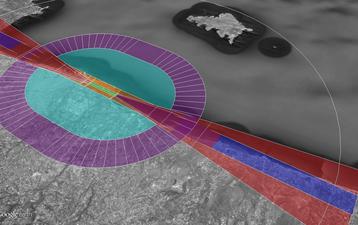
 Training 5 or more people? Ask for an In-house course at your premises or online!
Training 5 or more people? Ask for an In-house course at your premises or online!
 10% Discount on all public courses in Singapore. 20% off for each additional participant from the same company. Final price on
10% Discount on all public courses in Singapore. 20% off for each additional participant from the same company. Final price on 